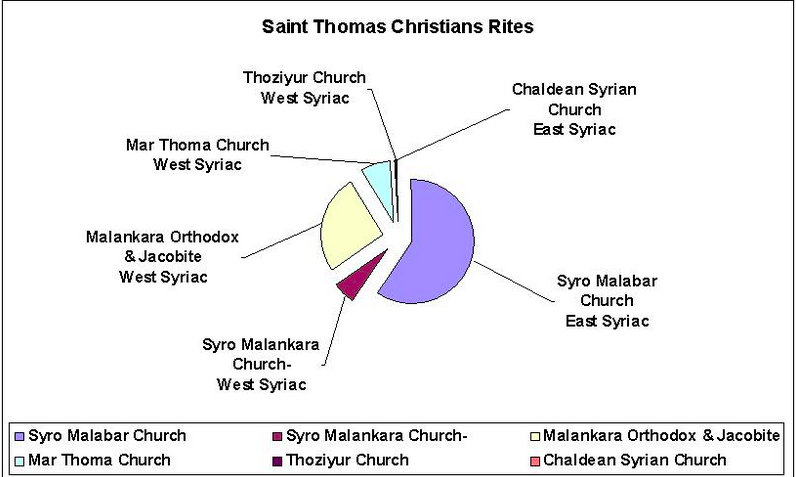RITE CULTURE AND DIOCESAN HOLINESS – Prof. C. John Rose

 I was re-reading the article titled “The Great Culture of our Syro-Malabar Church”, Almayasabdam (posted 30-10-2014). As the Editor rightly mentioned, this article asks the pro-tradition Masters to explain the difference between rites, the meaning of culture and the substance of the Church
I was re-reading the article titled “The Great Culture of our Syro-Malabar Church”, Almayasabdam (posted 30-10-2014). As the Editor rightly mentioned, this article asks the pro-tradition Masters to explain the difference between rites, the meaning of culture and the substance of the Church
During the homily at the closing Mass of Santhom Bible Convention 2014, Archbishop Kuriakose Bharnikulangara of Faridabad Diocese has hinted at ‘the pride in the tradition and culture’ of church citizens belonging to a particular rite as basic qualification to join his Diocese. If an average church citizen judges the culture and tradition of each rite, we end up asking how holy that particular diocese and its prelates are.
Recently I visited the Kollam Bishop’s House, from where Bishop Aloysius Benziger, the missionary Carmelite monk, reached out to parishes and mission territories sprawling between Pamba River and Kanyakumari (Cape Comerin). Missionary activities in those days in Travancore were spearheaded by foreign missionaries.
Bishop Benziger has been admired as a charismatic episcopus because of his out-of-diocese engagements as well, besides his regular duties as a diocesan bishop. He pioneered the canonization of St. Therese of Lisieux (Little Flower), a nun of the Order of Discalced Carmelites (OCD). He worked to the extent of building and inaugurating the first church in the world dedicated to Little Flower at Kandanvilai in Kanyakumari District. The Pope honoured him by inviting him to offer Mass along with him at the ceremony of St. Therese’s canonization in Vatican.
This activist-missionary bishop also played a key role in the historic Reunion Movement in Kerala Church. Due to his zealous role, Bishop Benziger was authorized by Pope to receive the Union-intent dignitaries officially into Catholic Church. These dignitaries, Bishop Benziger and his trusted team comprising Fr. Lawrence Pereira (who later became Bishop of Kottar) and John Mary OCD held many conferences in the silence and solitude of St. Mary’s Summer Villa at Olikara to discuss all minute details of the Reunion. Great privacy was maintained to ward off violent reaction from the part of Jacobites opposed to the Union with the Catholic Church.
The historic Reunion event, in which Archbishop Mar Ivanios and companions professed obedience to Pope and Catholic Church, was held at the chapel adjoining Kollam Bishop’s House. The marble slab placed on the inner wall of the chapel descriptively records this event: “In the year of Our Lord 1930 on September 20 in the Episcopal Chapel His Grace Archbishop Mar Ivanios OIC MA, His Lordship Bishop Mar Theophilus OIC, Rev. Father John OIC, Brother Alexius Cleric and Sri. Chacko Kilileyath layman, all Members of the Jacobite Church of Kerala were received into the Catholic Church by His Lordship Aloysius Maria Benziger OCD, Bishop of Quilon, whom the Archbishop approached for help, and whom the Holy See deputed to perform the Reception. Immediately followed the very first Holy Mass in the Catholic Syro Antiochian Rite” officiated by the Archbishop Mar Ivanios on the main Altar (still preserved intact) in this Chapel.
Immediately after the Reunion, Mar Ivanios went to Vatican to meet the Pope and finalize official matters such as the formation of dioceses of the Malankara rite and their status in the national ecclesiastical realm. During a discussion prior to his departure to Rome, Bishop Benziger told Mar Ivanios to set up the headquarters of the new rite in a suitable town other than Trivandrum, since it forms the headquarters of the new Latin Diocese to be bifurcated from Quilon Diocese and because the proposal for it has already been submitted to the Holy See, which is actively considering it. But Mar Ivanios retuned victorious securing Trivandrum as his headquarters. Bishop Benziger gulped down the affront and betrayal. He did not show it when he participated at the inauguration of the new (Malankara) Archdiocese of Trivandrum. He prayed, blessed and exhorted. He did not harbor any ill-will whatsoever. (Ref. Biography of Archbishop Benziger by Fr. Philip OCD, Carmel International Publishing House, Trivandrum). Further, Bishop Benziger handed over to the new Archdiocese about 10,00 ‘reunited’ Jacobites and 9 priests, who were with Quilon Diocese. In later years Mar Ivanios did not bother to make mention of the people or efforts that led to the formation of the Archdiocese.
Fr. Cyril Motha, another biographer of Bishop Benziger (Catholic Press, Quilon), writes: ‘The return of Mar Ivanios and Mar Theophilos to the Catholic Church is the most unforgetful event in the history of the Church in India. The Syro-Malankara Church is steadily progressing and flourishing now all over Kerala. In December 1980, the Golden Jubilee of the Reunion was celebrated with great pomp at Kottayam. It has to be remarked with surprise, that neither Mar Gregorios nor any of the eminent speakers hardly made any reference to Archbishop Benziger, the real architect who silently but most effectively worked out the return of the first Prelates and leaders of Jacobite Church to the Catholic Unity”. Though the eminent persons of Malankara church did not mention their roots at the pompous gathering, Fr. Placid CMI and Fr. C. M. George paid glowing tributes to Bishop Benziger and team in the Jubilee Souvenir. Fr. Motha concludes: “How is it that Jabobites hardly mention Bishop Benziger and his years of tremendous efforts in their conversion?”
There is a book titled “Archbishop Mar Ivanios in His Thoughts”, edited by G. Chediath et al (MS Publication, Nalanchira, Trivandrum). Unfortunately, the 148 – page volume does not mention Bishop Benziger anywhere. Yes, the architect of Reunion is not in Mar Ivanios’ thoughts!
One wonders how Archbishop Kuriakose Bharnikulangara could speak of the pride in the tradition and culture as basic qualification to join his Diocese. If an average church citizen judges the culture and tradition of each rite, even in human terms, he/she will only end up questioning HOLINESS being tagged to dioceses and their prelates.
The above narration about the Reunion Movement and its aftermath are only a case to focus the attention of church citizens regarding our Mother Church and the culture of her various rites. The intention is not to cast aspersions on a rite or a prelate or a diocese.
As the Editor of Almaya Sabdam rightly avers, the pro-tradition Masters should explain the difference between rites, the meaning of culture and the substance of the Church, which is characterized as One, Holy and Catholic.
Writer’s Address:
Prof. C. John Rose, Founder-Correspondent
National Matriculation School, Arumanai (P.O.) – 629 151
Kanyakumari District, Tamil Nadu
E-mail: sarathyindia@gmail.com
Mobile: 09443575718
















